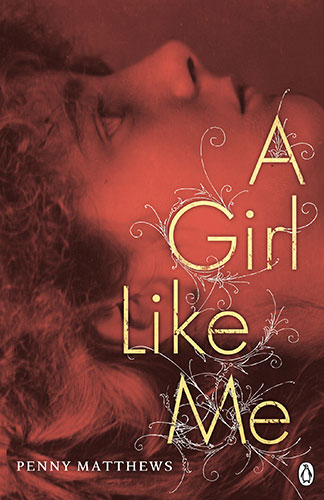Author: Penny Matthews
Publisher: Penguin Group (Australia)
Copyright Year: 2010
ISBN: 978 0 14 301148 4
Review By: Gayl O’Connor
Book Synopsis:
This heartbreaking story is based on real events that took place more than a century ago, capturing headlines all around Australia. This fictional account of those events is written from the point of view of Emmie Brooker, a young aspiring writer, who develops a friendship with Bertha Schippan. Their lives couldn’t be more different, but Emmie can’t help liking Bertha – she’s funny and knowing and wild, and she distracts Emmie from the monotony of farm life in their tiny, isolated community. But, as Emmie discovers, Bertha has secrets. Terrible secrets.
A Girl Like Me is Penny Matthews’ first young adult novel. The book is based on a true story Penny first heard as a child when living in the small South Australian settlement of Towitta. The Murray Flats of 1901 come vividly to life in Penny’s descriptions of the hot, windy and dusty farming landscape. The daily grind of a young lady’s domestic duties on a working farm are exemplified by wash day: water boiling in the copper, an unforgiving mangle, and the heavy burden of the wet clean wash to cart outside, all to be borne without complaint on the hottest of summer days. These and other chores clearly illustrate Emmie’s predicament as a clever girl forced to leave school early and now stuck in the monotony of routine. Emmie’s everyday life contrasts sharply with her rich inner world as we witness her attempt to write a ‘Bronte–esque’ romance.
The ‘down to earth’ Bertha comes to the Brooker home to help with chores two days a week and brings with her a number of confronting challenges to Emmie’s romantic view of the world. Although younger than Emmie, Bertha is worldly-wise whereas Emmie is naïve, despite her avid reading of the tome given to her by her mother, What A Young Woman Ought To Know by Mary Wood-Allen, MD. It is often Bertha who provides Emmie with practical strategies for dealing with social situations involving the opposite sex. On the other hand, Emmie is offended by her friend’s behavior when her older brother, James, comes home from his final year of boarding school in Adelaide; and Emmie finds it difficult to relate at all to Bertha’s descriptions of her relationship with her sister’s fiancé, but nevertheless tries to be a loyal friend.
The novel’s themes are many and several are not easy ones: aspects of family violence, paedophilia, depression, loss of loved ones, and a consideration of possible motivations for murder. They are made accessible to the reader as we see how the two young women deal with these issues, and this may resonate – and provide support to – young women of today who are possibly struggling with similar or related contemporary issues.
Although the novel is aimed at young adult readers, the novel is likely appeal to a much broader audience. The story was riveting, with the reader feeling indignant on Emmie’s behalf at the stifling life she was forced to lead, urging her on with her writing endeavours, and rejoicing as she determines to follow her dreams. Writers, no doubt, will identify with Emmie’s initial writers’ block, and be happy with the resolution for the direction of her writing. Like Emmie, as a reader it was difficult to know what was indeed true, and what was pure fabrication, in Bertha’s version of events. This element of uncertainty – and the accompanying need to know – is surely the sign of a successful mystery novel.
The inclusion of Penny’s dedication to the memory of Johanne Elizabeth (Bertha) Schippan is a reminder that we should not forget Bertha and her story, but it also anchors us back to reality, as do the inclusion of extracts from actual newspapers of the time, and the mention of the ongoing publication of Mrs Mary Wood-Allen, M.D’s tome for young women provided in Penny’s Notes on the Story.
